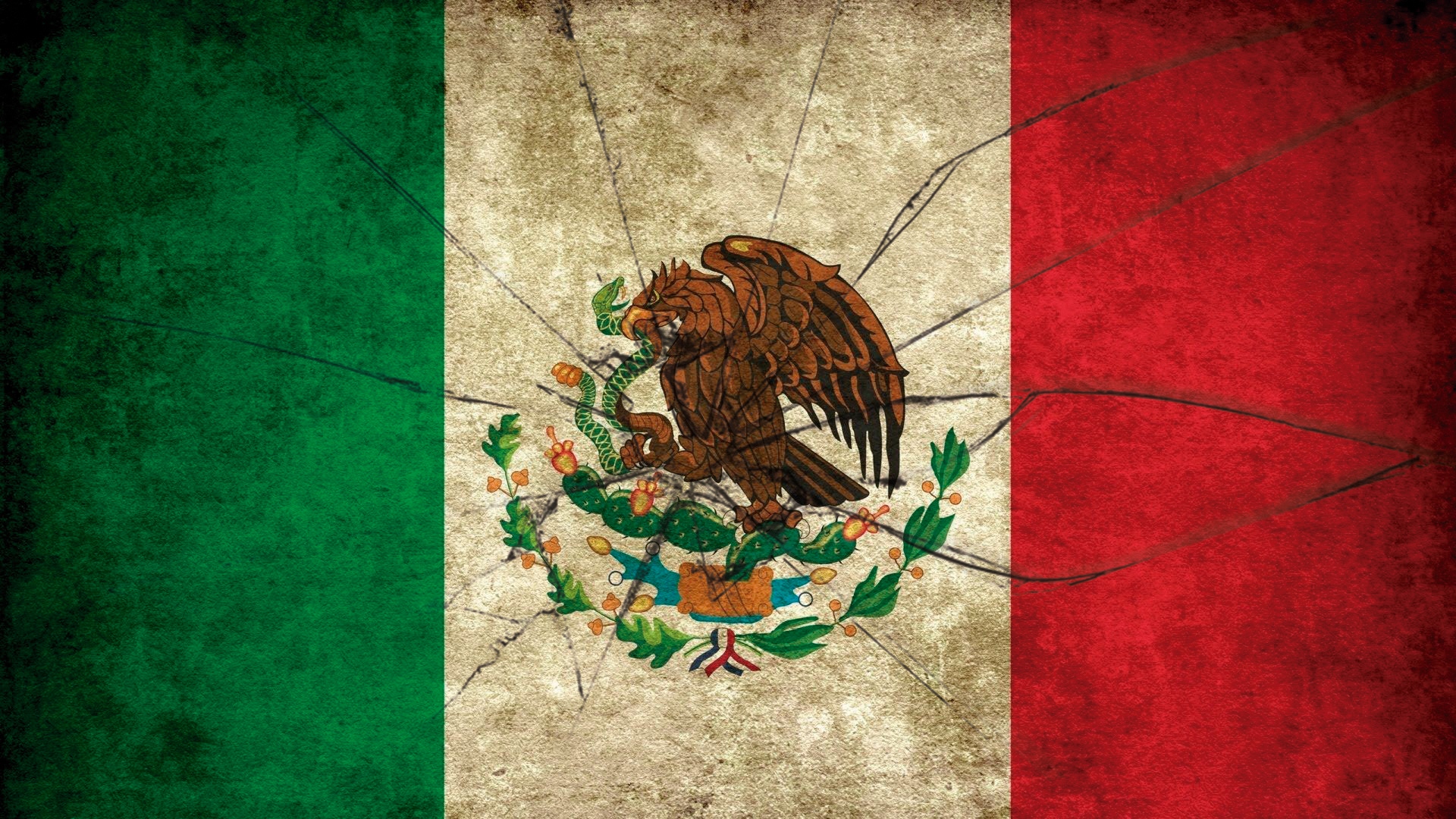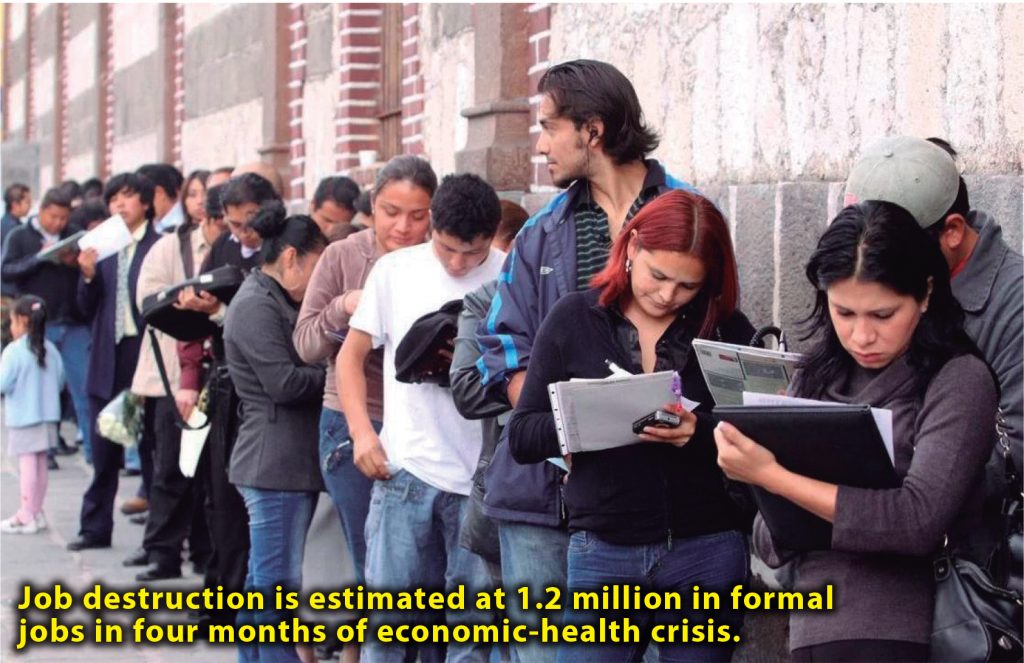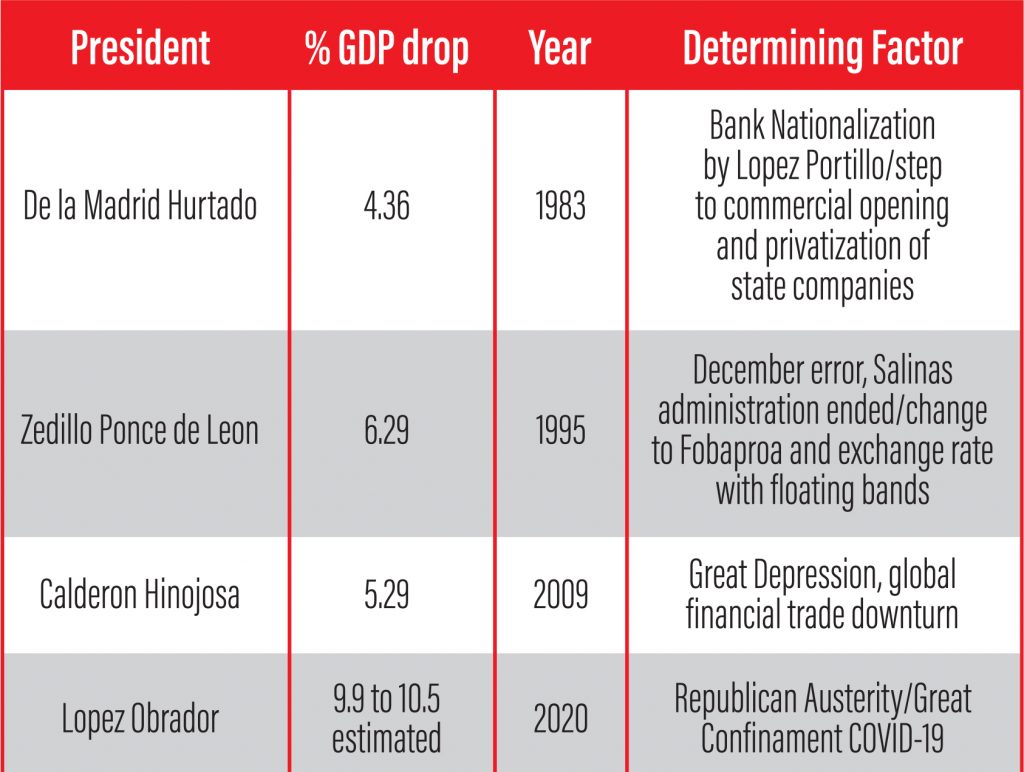Who or what to blame?

By Carlos Palencia
Analyst
Mexico is in evident decline: -18.9% is the fall in real annualized GDP that INEGI recently announced. We have been contracting for five consecutive quarters, and, from the last nine, production has been reduced in seven.
For the April-June quarter 2020, the drop in GDP was the highest in the so-called modern era, leaving deep damage in the industrial, commercial and services sectors. Only one large sector was less impacted: agriculture, which, being essential, will always be fundamental. Expanding on the data, the head of INEGI pointed out that “the annual decline in the second quarter is the highest in the history of this indicator and exceeds the drops in 1995 (-8.6%) and 2009 (-7.7%). The impact has also been redefined in years of decline and a collapse of GDP per inhabitant, which could be the decline of almost a quarter of a century.
Regarding industrial activity, May was disappointing despite the fact that in the middle of that month the federal government defined the staggered opening of some business activities. Despite this, the results were worse than predicted and industrial activity plummeted at an annual rate of 30.7%.
Regarding the possible improvement, there are two acting elements. The fist is low inflation, standing at 3.33% at an annual rate but with upward pressure. A second factor—and this one is hopeful—is an improvement in the trade balance, which is why the external sector and IMMEX companies are expected to be the lifesavers of the Mexican economy. We can see a particular thing with export manufacturing companies regarding June figures; although it is already known that the country’s total exports reached US$33.076 billion and therefore a surplus of US$5.547 billion was obtained.
During the last six (administrations or governments) there have been obvious years of crisis, and this is not the exception (Exhibit #2), although it is the most profound disaster in the measurement of GDP.

Being positive, certainly in the July-September quarter there would not be such a deep decrease, but it will not be a broad reactivation due to low demand/consumption, as observed so far due to low attendance in shopping centers, empty restaurants, and trips postponed.
To lessen the impact and favor a better acceleration of the recovery many economist insist on proposals such as:
• Temporary unemployment insurance for workers.
• Minimum vital income or solidarity insurance for the unemployed, formal and informal.
• Encouragement to cover the payroll, particularly of MSMEs, both to maintain current employment and to generate new ones.
The deputy governor of Banco de México, Gerardo Esquivel, has already said that an excessively lax fiscal response is as dangerous as the contraction in public spending. He points out that a countercyclical spending policy would end up being counterproductive as it would hinder economic recovery and have important social effects. The calculations of the deputy governor are extended to a contraction on the third quarter of between 8% and 12% and for the final quarter another fall of between 4% and 8%.
Therefore, the deputy governor mentions that if GDP falls by 10% this year and the recovery in the next two years is between 2% and 3% per year, the Mexican economy would barely reach 2019 levels. That is why the government must act.
This is important to note since another of the deputy governors, Jonathan Heath, points out that the second quarter bottomed out and so recovery begins, although it will be difficult and prolonged, so it does not mean that the crisis is over. Although it may not be all negative, as this deputy governor says, since if the IGAE (Global Indicator of Economic Activity) figures for April and May are tied with the fall in quarterly GDP, it turns out that in June it could have grown more than 8% compared to the fifth month of the year … it would mean that the bottom has been reached but not expecting a quick recovery or a V shape. Will the deputy governor continue to think as he did at the beginning of this year, that despite the negative variations presented (-0.1% in the fourth quarter of 2019), it was not possible to speak of an economic recession due to the particularities of the national economy?
Are the numbers the least?
Beyond GDP and arithmetic, one real factor is more important: people. Job destruction is estimated at 1.2 million in formal jobs in four months of economic-health crisis, which deepens with 12 million people without income, many of whom are in the informal sector and therefore have decided to go out to find a livelihood despite high levels of contagion.
That is why the context should not be minimized as the president does when he affirms that a few thousand jobs were already lost in June (minus 83,311 and for July 31,000 estimated) and the recovery would begin. Grim reasoning since he pointed out that companies (and therefore people) should figure it out themselves as best as they can and if they should go bankrupt then let them go bankrupt; companies and entrepreneurs that don’t have government support yet but have tried to retain their collaborators as much as they can out of ethical and social commitment, that is compromise, humanism, not politicking.
There is undue media opportunism on the part of the government and the president, since they also change the reality by pointing out that the fall in GDP has not generated greater poverty or deterioration in welfare levels, since social programs have been reinforced.
But if that were true, then how can it be explained that CONEVAL (the National Council for the Evaluation of Social Development Policy), with information from INEGI, mentions that 54% of Mexicans fell into working poverty in June, a 20% jump.
But not only the CONEVAL and the INEGI show negative data and estimates. The ECLAC (Economic Commission for Latin America and the Caribbean) indicates that poverty in our country will grow 5.9% this year and that the number of Mexicans living in extreme poverty will increase by 4.8%. For CONEVAL, there will be 31.7 million people and 70 million in general poverty in 2020.
The—hateful— comparisons

It must be recognized that a few countries in the world are doing well. After knowing the INEGI figures, it began to be said that we were not doing so badly because the contraction in the United States was greater, at 32.9%, but it was not taken into account that it was an annualized rate in the second quarter compared to the first. Not being similar methodologies in both countries, the decrease of 17.3% in the second quarter is equivalent to a decline of 7.4% in the neighboring country. If the methodologies were similar, in Mexico the decline would then be of 53.1%.
Another parameter of comparison refers to the payback period. Banco BASE estimates that the United States would recover in 2.5 to four years; this must be considered due to the linkage of Mexican exports to the market. Additionally, for our country, it is considered that the recovery will require six to 11 years.

Interesting periods are considered for the recoveries of the U.S. and Mexican economies, since there are several analysts and organizations pointing out the risk that in the current presidential administration the average economic growth is zero or even negative. Then, we would be falling into a shadowy lost generation and we will try to forget the current president’s discourse that neoliberal governments grew stunted… how can that modest 2.4% per year be missed.

Colophon
There is no single factor or person who should be blamed for the disaster we are experiencing. Neither outside nor inside. It is the combination of several factors in the two dimensions. Internally, the uncontrollable contagion and high number of deaths, the uncoordinated health policies, the non-total reopening of services throughout the country, the non-application of a stimulus fiscal policy to face economic stagnation, the poor exercise of spending on that sector, the ideology and media trend of minimizing the facts and polarizing, are just a few factors that together have caused this terrible debacle.
However, we still have time to define economic, monetary and fiscal stimulus measures, to take actions to reduce the contagion/ deadly impacts of the virus and to apply policies/speeches in favor of national unity.
